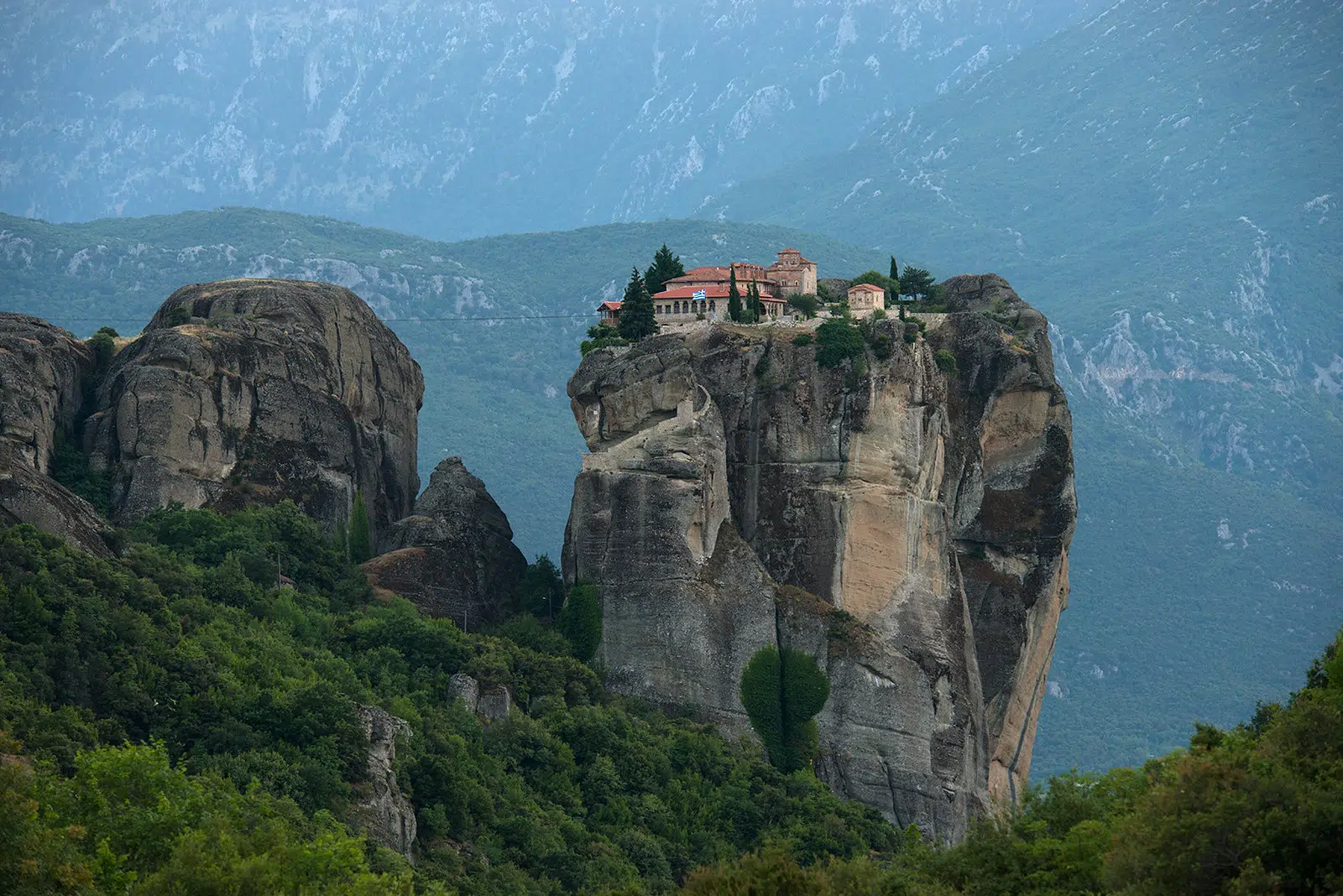
A video of a ‘giant skull,’ wedged between two stone pillars at Greece’s Meteora rock complex, a UNESCO-listed site at the northwest edge of the Thessaly Plain near the mountains of Pindos, has gone viral on social media.
The complex, featuring enormous stone pillars topped with ancient monasteries, has people believing there are age-old secrets yet to be revealed. In fact, the social media video, taken by unsuspecting hikers, claims to have uncovered one.
Mystery of the Meteora giant skull
The two hikers were exploring Meteora’s towering sandstone structures when they noticed an unusual sight. Squeezed within the dark crevice between two stony escarpments was an object that appeared to be a giant human skull.
The explorers took a video of their discovery, and the footage has since been circulating on social media, with viewers adamant the pair had stumbled upon the remains of a giant. Sharing it to her TikTok account, paranormal enthusiast Myra Moore said, “Now, I’ve zoomed in, I’ve zoomed out, changed the coloring and to me, it truly looks like a skull and not some sort of weird rock formation.”
@_theparanormalchic Was a giant skull found in the rock formations of Meteora, Greece? #theparanormalchic #meteora #greece #giantskull #skull #ancients #nephilim #nephilimgiants #giants #giant #paranormales #supernatural #creature #monsters #cryptid #paranormal #paranormalinvestigator #investigate #rocks #rockformation #petrified #greecetravel #history #ancientbeings #secrets #truth #uncoveringthetruth #fyp
Others who commented on the Meteora skull video seemed to agree, with one writing: “You’re spot on. That is a giant humanoid skull. And the little bit underneath it could be the rest of the skeleton.” Another commenter posited that the alleged skull’s owner may have gone climbing and fallen. “Looks like it’s wearing clothes too,” they added.
Others rejected the suggestion that the object was a skull, making particular reference to the nature of decomposition. “It’s not a skull,” one commenter argued, as “the bottom jaw would have dropped off a long time ago.”
This latest discovery is not the first time “evidence” of so-called giants has been uncovered at an ancient site. In 1911, archaeologists unearthed mummies that apparently measured between eight and 10 feet tall in a cave in Nevada. They were subsequently dubbed the Lovelock Giants. Not long after this find, two skeletons measuring 8.5 and 10 feet in height, respectively, were reportedly discovered in a dry lake bed near the Lovelock site.
Local myths of Meteora
Meteora, however, is most commonly known not for giants (or their skulls) but for a different mythical beast. In such magnificent and surreal rocks, it is inevitable for the imagination to conjure up mythical creatures.
Thus, the Dragon’s Cave has earned its name. It is nestled at the southern base of the rock housing one of Meteora’s six remaining monasteries, the Varlaam Monastery. According to local lore, a terrifying dragon once dwelled there, subdued by a divine intervention—a lightning bolt that shattered part of its lair, entombing it beneath rock fragments.
This cave still exists today, penetrating the entirety of the rock’s thickness just like a tunnel. Nowhere else in the rocky expanse of Meteora will you find a cave quite like it. At its base lie scattered boulders, hindering passage from one opening to the next.
Similarly mysterious is the rock hosting another creature, situated in Rouxiori, a once-inhabited area of Meteora now deserted (with its residents assimilated into the area of Kastraki). The half-humanoid, half-beast apparition—with a beard trailing to the ground—would materialize and vanish within a darkened cavern.
Unlike the numerous accessible caves in Meteora, local legends recount how the elders of Kastraki refrained from utilizing this specific cave for their livestock. They often discovered slaughtered lambs with no visible signs of injury there. The terrifying creature was deemed responsible for this unexplainable phenomenon.
See all the latest news from Greece and the world at Greekreporter.com. Contact our newsroom to report an update or send your story, photos and videos. Follow GR on Google News and subscribe here to our daily email!



